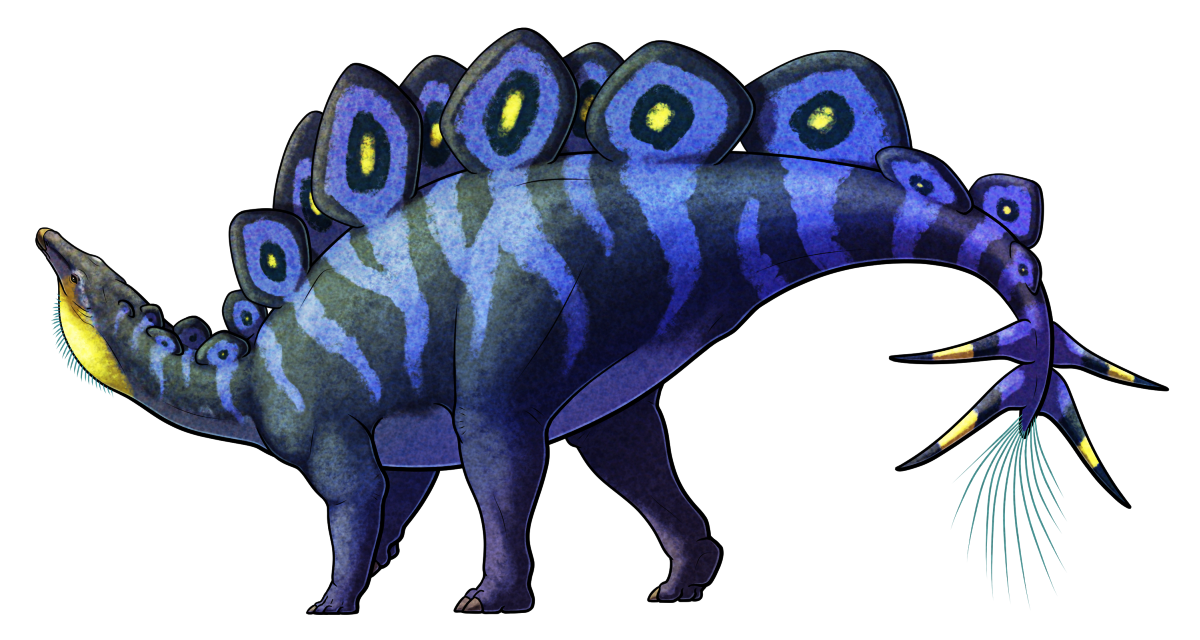Stegosaurs are some of the most popular and recognizable dinosaurs thanks to their unique appearances, with small heads, elaborate back plates, and spiky thagomizer tails.
Closely related to the ankylosaurs, they first appeared in the mid-Jurassic about 170 million years ago. While they lasted until at least the mid-Cretaceous (~100 milion years ago), their heyday was in the latter half of the Jurassic, ranging all across Asia, Europe, Africa, and North America – and the North American species like the eponymous Stegosaurus developed especially elaborate plates in a distinctive asymmetrical pattern, not arranged in pairs like most other stegosaurs but in alternating rows along each side of the midline of their backs.
Hesperosaurus mjosi lived around 156 million years ago during the late Jurassic, in what is now Wyoming and Montana in the Western United States. It was closely related to Stegosaurus but was a little older and a little smaller, about 5-6m long (~16-20′).
Much like its more famous relative its plates seem to have alternated along its back, which may have been an adaptation to maximize visible surface area while minimizing the number of plates, saving on the energy needed to grow such large elaborate ornamentation.
Hesperosaurus might also represent a rare case of possible sexual dimorphism in non-avian dinosaurs, with wider more rounded plates potentially interpreted as belonging to males and taller pointed plates belonging to females.

